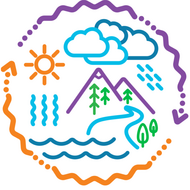BIPOC Voices
(View Complete Item Description)The BIPOC Voices project supports educator and student learning about Black, Indigenous, and People of Color scientists and community advocates. This project comprises a set of multimedia resources, including video interviews and an activity guide, that are designed to inspire critical conversations about BIPOC representation, justice-related professional pathways, and the role science can play in helping communities to thrive. Educators engage online with an asynchronous course to deepen their own learning, prepare for classroom implementation of the resources, and reflect on their experiences facilitating activities with students.
Material Type: Module
















